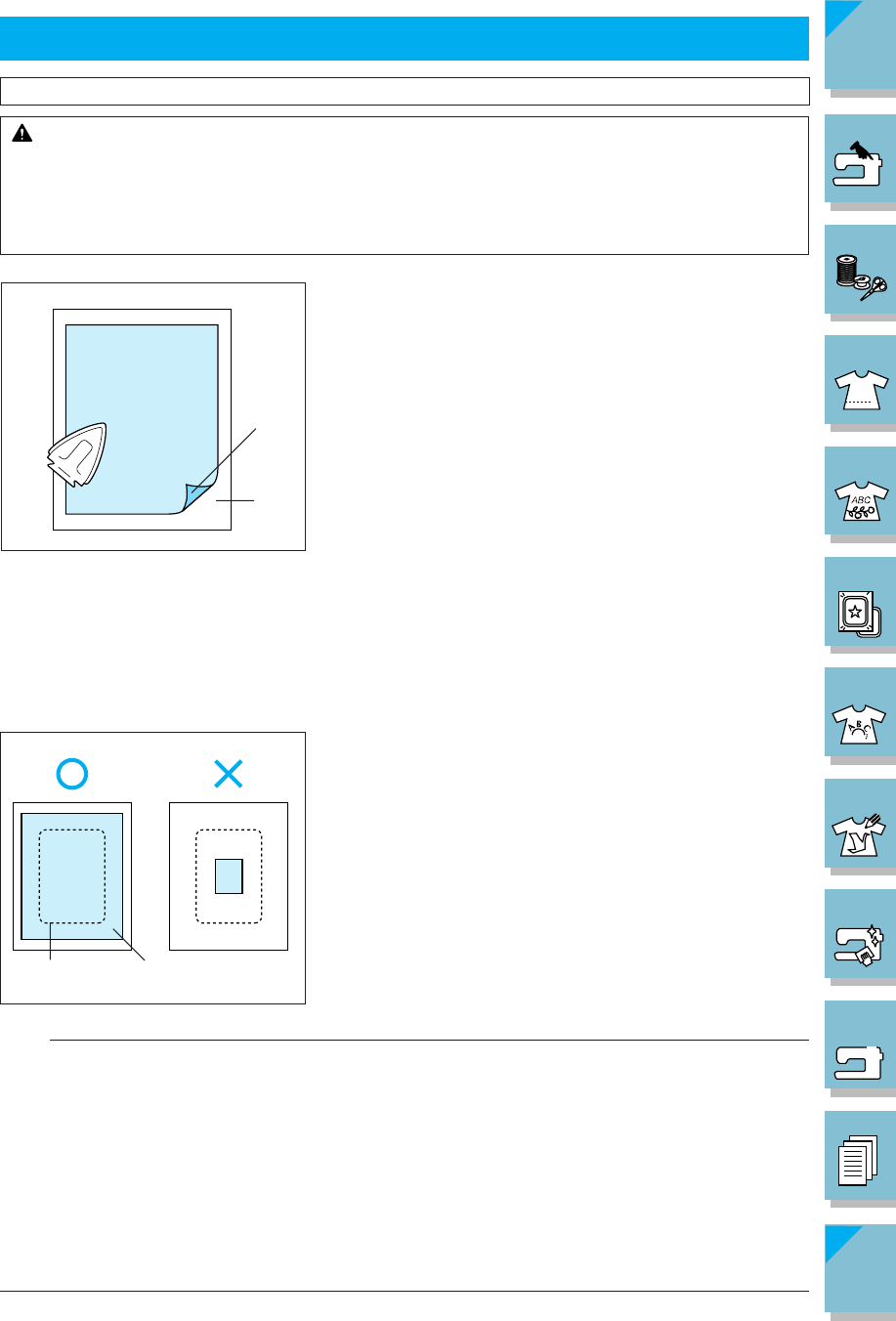
5-20 Embroidery
1 —
2 —
3 —
4 —
5 —
6 —
7 —
8 —
?
!
9 —
CONTENTS
Index
1
2
1
2
PREPARING THE EMBROIDERY FRAME
Attaching a Stabilizer Material to the Fabric
CAUTION
Always use stabilizer material for embroidery when sewing embroidery projects, espe-
cially when embroidering on lightweight or stretch fabrics. Otherwise, the needle may
break and cause injury. Not using a stabilizer material may result in a poor finish to your
project.
For best results in your embroidery projects, always use
stabilizer material for embroidery. To prevent shrinking or
other problems, follow the advice below.
1. Always use a stabilizer material for embroidery when
sewing stretch fabrics, lightweight fabrics, fabrics with
a coarse weave, or fabrics which cause pattern shrink-
age. Iron the stabilizer material to the back of the fab-
ric.
* When using fabrics that can not be ironed (such as
towel or fabrics that have loops which expand when
ironed), or in places where ironing is difficult, place
the stabilizer material under the fabric without attach-
ing it, then set the fabric and stabilizer in the embroi-
dery frame, or check with your authorized dealer for
the correct selection of stabilizer.
1 Attached surface
2 Fabric (reverse side)
2. Use a piece of stabilizer material which is larger than
the embroidery frame. Make sure that the stabilizer
material is clamped all the way around the frame to
prevent the fabric from loosening.
1 Size of the embroidery frame
2 Stabilizer material
Note
• For best results, we recommend you use stabilizer material for embroidery. Embroidery stabi-
lizer material removes easily after embroidery. Follow stabilizer package instructions.
• When embroidering on thin fabrics such as organdy or lawn, or on shaggy fabrics such as
towel or corduroy, use water soluble stabilizer material (sold separately) for best results. The
water soluble stabilizer material will dissolve completely in water, giving the project a more
attractive finish.


















